#hands off assata
Text
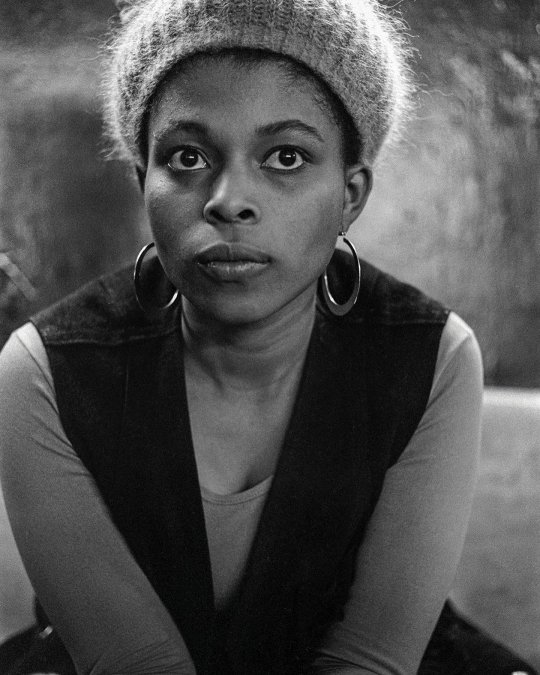
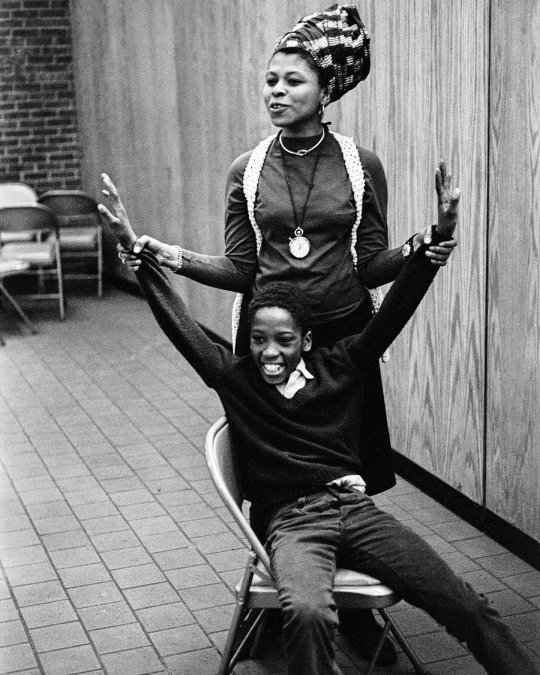
Photographs from the Black Panther Party series by Stephen Shames (1970s)
#assata shakur#black panther party#black panther#black panthers#black photographers#black photography#black power#black history#black excellence#Stephen Shames#assata#hands off assata#revolutionary#black revolutionaries
581 notes
·
View notes
Text
Julia Wright, daughter of literary icon Richard Wright on what the death of Queen Elizabeth II should mean to Africans worldwide.
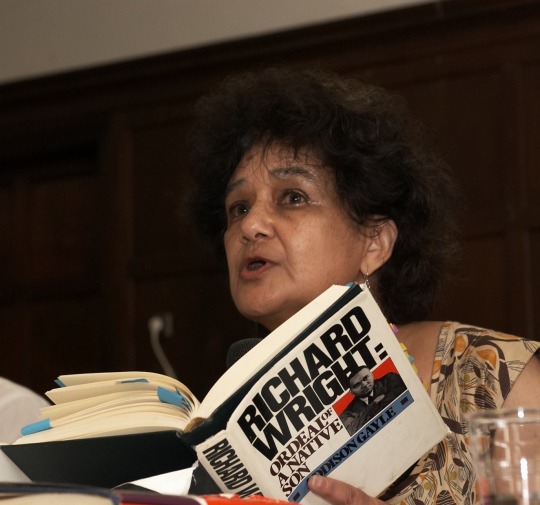
MOURNING OUR OWN QUEENS...
"There will be many funerals..."
-George Jackson, shortly before his murder
As a veteran journalist, I watch the body language of thousands of mourners in live streaming, as I write, filing to pay their respects to their late monarch, Elizabeth the Second, in Saint Giles Cathedral, Edinburgh.
As a Black woman, this is what I see: a crowd of mostly shabby genteel, mostly white, vacant faced, subdued, awed, baffled, bewildered, tired, ordinary folk cut off by a cordon from the object of their mourning, unable to have a last look at the face of the person they grieve for because the casket is closed. Other folks chat while they watch virtually and vicariously and wonder if there is actually anybody in that pompously guarded coffin.
Very symbolic doubt... Will there come a time when they will wake up to a Santa Claus monarchy?
My sadness goes not to this privileged, imperially entitled Queen but to these masses amassed in their living dream as they file in front of empty and antiquated pageantry.
Words from one of my father's favorite poets, Vachel Lindsay, come back to me: "It is not that they die, it is that they die like sheep".
It is said that the late Queen had a minute hand in planning the details of her own funeral - at a cost of billions of taxpayers pounds.
Dr Janine Jones and Kalonji Changa - who defends the poor - agree to say: we need equality in the face of death.
I rewind to the footage of Emmett Till's funeral: his open casket by decision of his mother, Maimie Till Mobley, who brought his sealed lynched remains back from Mississippi at the cost of a full year of her own salary. The thousands who passed close to the open coffin were not cordoned off from History - in fact this absence of cordons, this transparency sparked the civil rights movement.
Maimie, our Black Queen, turned us towards the future with the decisions she took - not towards a stultified past.
And I rewind to Malcolm X's funeral and to the mourning crowds excluded from it, waiting cordoned off by hostile police behind barriers. And I pay tribute to the dignity of another Black Queen, the late Betty Shabazz I was years later to meet - and the talk we had.
And I rewind to the poignant footage of Martin Luther King's funeral and the humble pauper's cart that drew his coffin after the funeral service at Ebenezer Church. And my heart goes out to another Black Queen, the late Coretta Scott King, so full of courage surrounded by so many of her husband's assassins.
And I rewind to so many of our funerals - when we are fortunate to be given back the bodies of our lynched and to bury them.
I want to pause a moment on the soul-wrenching funeral of George Jackson who in his own "royal" way prepared his own funeral by writing:
"an empty bed
tears are shed
no more sun
after I'm gone
my family cries
their love has died
my friends are there
death's in the air
my chains unbound
I'm put in the ground
everybody's sad
but I'm glad
it's lucky me
because now I'm free"
I recognize as one of my Black Queens, his mother, Georgia Jackson who lost two sons, Jonathan and George to white supremacy and "did not sit in a corner and cry".
And what about our other ancestral Queens: Harriet Tubman, Ida B. Wells, bell hooks to name only three.
And then we have the living who are not yet even elders: Assata Shakur, Pam Africa, Johanna Fernandez...
We are blessed with so many Black Queens, alive and dead - we are so rich.
Let's celebrate.
(c) Julia Wright September 13 2022
8 notes
·
View notes
Text
"The central problem with the social media age is its never-ending cacophony. Silence and contemplation are never allowed. As a result, responses to mass murder almost immediately begin to conform to folks’ prior views — on gun regulation or on white supremacy, typically, but also a broader set of assumptions about how society is and should be organized. When tensions are so high, honest conversations are difficult.
And yet, those conversations must happen — and we cannot honestly talk about racist mass murder without talking about capital and the profit system.
We are not being honest about violence if we ignore the profit motive in weapons manufacturing.
We are not being honest about racism if we ignore the profit motive in the racism that makes non-rich white people identify their problems as Black people instead of the small handful of capitalists who control the global economy.
We are not being honest about the context of violence if we ignore economic inequality.
We are not being honest about media-fueled hate if we ignore the profit motive in news and social media companies that make money off outrage.
In short, we are not being honest about what’s happening if we ignore how hypercapitalism brought us to this moment.
As Martin Luther King, Jr said to his staff in 1966: 'Something is wrong with capitalism. There must be a better distribution of wealth, and maybe America must move toward a democratic socialism.'
By making explicit the connection between racism and capitalism, we honor the legacy of Black thinkers who have explored this question — from Langston Hughes, James Baldwin, Assata Shakur, June Jordan, Lorraine Hansberry, W. E. B. Du Bois, Paul Robeson, bell hooks, and Claudia Jones, to Robin D. G. Kelley and Keeanga-Yamahtta Taylor today.
Papering over these links between racial and economic inequality, then, is also papering over Black American intellectual history.
By skirting around the solution to the problems that all of us in the global 99 percent face, we’re not honestly diagnosing the disease and taking steps to address it in the body politic.
Particularly in the United States — where the socialist branch of the labor movement that brought us the eight-hour workday, the weekend, and Social Security was crushed in the McCarthy era and never recovered — we must start explaining the virtues of worker control over production and worker power in politics, and how it addresses the problem we face: the rich make every economic decision in society, while treating workers as subhuman.
'Call it democracy, or call it democratic socialism, but there must be a better distribution of wealth within this country for all God’s children,' King said."
- Matthew Cunningham-Cook, from "We Can’t Talk About the Racist Massacre in Buffalo Without Talking About Capitalism." Jacobin, 16 May 2022.
#matthew cunningham-cook#quote#quotations#martin luther king jr#mlk jr#democratic socialism#african american history#black lives matter#blm#labor movement#racism#buffalo shooting#mass shootings#gun violence#american culture#corporate media#wealth inequality#capitalism
7 notes
·
View notes
Video
youtube
Hands Off Assata Shakur: Angela Davis Calls for Radical Activism to Prot...
0 notes
Text
So I was in a slightly different work situation where I couldn't be on my phone much, and that means I'm like a week behind on albumposting. So here's a huge one:
Apparently where I left off was The White Stripes according to my site history, so that makes the next one So by Peter Gabriel. Was good. Has his ginormous hit "Sledgehammer" on it, which is a ginormous hit for a reason. This was like a week ago at this point so that's about all I remember, but I gave it a 4/5.
Next up, The Miseducation of Lauryn Hill, no points for guessing the artist. I *like* the bits after each track of audio from a classroom where a teacher talks about what the next topic is gonna be, but it definitely gives the album a kind of weird pace because you'll be listening to a fun song and as it fades out and you're eagerly awaiting the next one you instead get a minute or two of only kinda related whatever. Still though, the tunes are good and unlike most albums I've listened to through this that had between-track skits they had a clear POINT and also none of them were painfully awkward audio of the artist getting their dick sucked. (I'm reasonably certain Lauryn Hill doesn't have a dick anyway, but I'm even more confident that if she did she STILL wouldn't have put audio of her getting sucked off on this record as a skit.) Cannot overstate how refreshing that is because LITERALLY every album this list has given me so far with inter-track skits includes one or more of them being the artist getting blown. Aaaaanyway tangent over 4/5 it's good.
Next! The Age of Understatement by The Last Shadow Puppets. Never heard of this one before, but man did it whip ass. It's basically a lost Arctic Monkeys record, and damn did it rock. 5/5. Probably my favorite thing in this grouping here.
Now, Fuzzy by Grant Lee Buffalo. Little bit like the Pixies' softer stuff. Very calming and nice. Not a lot to say about it. 4/5
Like Water For Chocolate, by Common. I just didn't really vibe with this one. It's certainly not bad but it didn't really do much for me. "A Song For Assata" was good. 3/5
Then yesterday was Slanted and Enchanted by Pavement. It's another album where it's the sonic equivalent of sticking your hand in styrofoam packing peanuts, and thus earns the same rating every one of them gets: 3/5.
Today, finally caught up, was Black Holes and Revelations by Muse. An album I'd actually heard a bunch of songs from already from back when I used Pandora in my late teens and got a lot of Muse. Some of it I like a little less than I did then, some a little more. "Knights of Cydonia" I like a LOT more because I was introduced to it through Guitar Hero and it just isn't a super fun song in those games. Listening to it all with fresh ears really makes me appreciate that Muse is such a good fucking band man. 4/5, plus an apology to KoC for having the misfortune of meeting me in an unfortunate method shine on you good little song you.
#album of the day#albumoftheday#music#muse#black holes and revelations#slanted and enchanted#pavement#like water for chocolate#common#fuzzy#grant lee buffalo#the age of understatement#the last shadow puppets#the miseducation of lauryn hill#lauryn hill#peter gabriel#im not tagging the peter gabriel album by name because “so” is waaaaaaay too vague
0 notes
Text

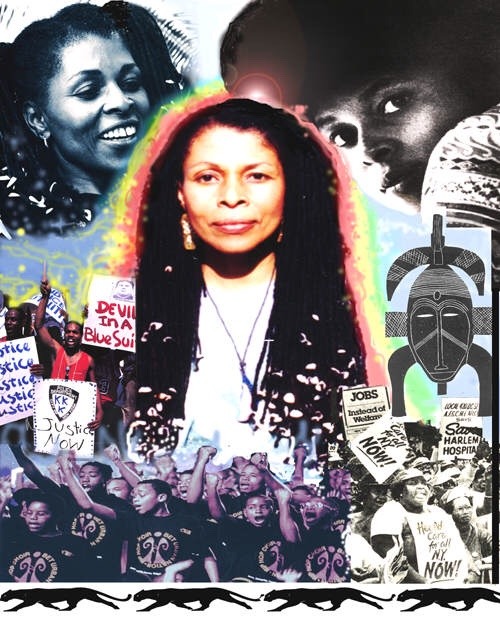
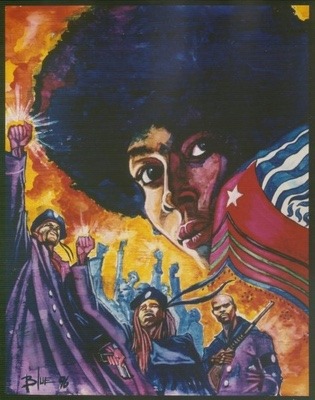

Assata (Shakur) Taught Me
49 notes
·
View notes
Text

22 notes
·
View notes
Photo
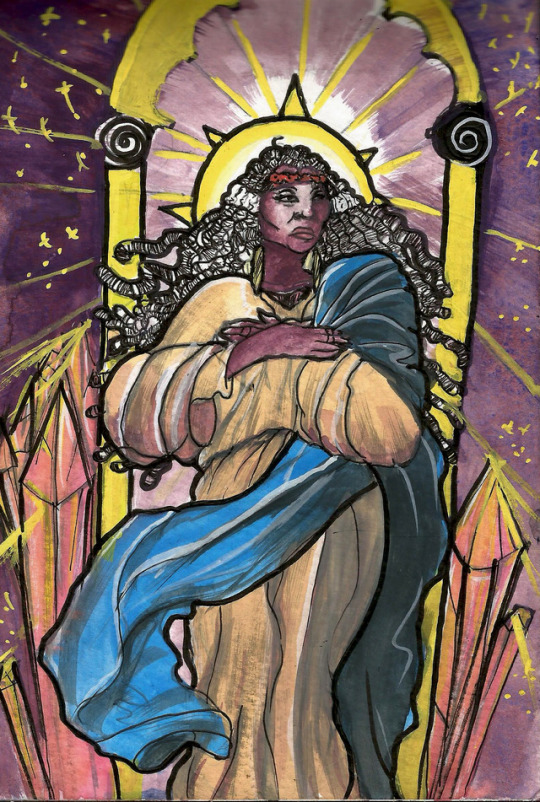
#Inktober day 30- Assata Shakur x Stained glass saint
#art#myart#gouache#pen#ink#inktober#artists on tumblr#black art#black artists#Assata Shakur#hands off assata#handsoffassata
142 notes
·
View notes
Photo

‘Black Liberation Army Communique - A Message from the Underground’, Black Liberation Army, United States, [early 1980s].
#black liberation#black power#black nationalism#1980s#african american#african diaspora#hands off assata#assata shakur#national liberation#political prisoners
88 notes
·
View notes
Link
Assata Shakur, born Jamaica, NY on July 16, 1947, was a political activist who took part in the Black Panther Party and the Black Liberation Army. She is most notable for the killing of New Jersey State Trooper Werner Foerster in 1973. Incarcerated 4 years later, she was able to liberate herself from the hegemonic prison-industrial complex and find political asylum is the ever so wonderful Cuba (thanks Comrades!).
To many Americans, on the surface, shes a “cop-killing FBI wanted terrorist” who deserves her justice. But she doesn’t. While she is an accomplice to murder, only wounding a cop, (while she was also, if not more, wounded as well), she does not deserve the label “terrorist” or “cop-killer”; she doesn’t deserve to have been put in jail for life; she doesn’t deserve to be a victim of this institutionalized racism and sexism. As stated in the letter above, she was charged for 6 different things before the shooting, fortunately, they were all dismissed or she was acquitted. This shows how the police force, the judiciary system, and the people all failed to be just, and instead demonized her due to her race, her sex, and most importantly, her ideology. The US government and the NJ police force are trying to extradite her and resume her justice for the killings, but justice isn’t charging an innocent woman with a life sentence, justice isn’t targeting PoC, mentally ill, and the poor, justice isn’t threatening lawyers of Assata and PoC. p>
I advise reading the letter above as it shows how this woman was demonized by the system she fiercely opposed, how it tried to silence her through torture, and how the prison industrial complex in the US is rampant with corruption, racism, and classism.
“Nobody in the world, nobody in history, has ever gotten their freedom by appealing to the moral sense of the people who were oppressing them.” -Assata: An Autobiography
#socialism#anarchist#anarchism#communist#communism#personal commentary#left politics#aesthetics#Assata Shakur#hands off assata
11 notes
·
View notes
Photo
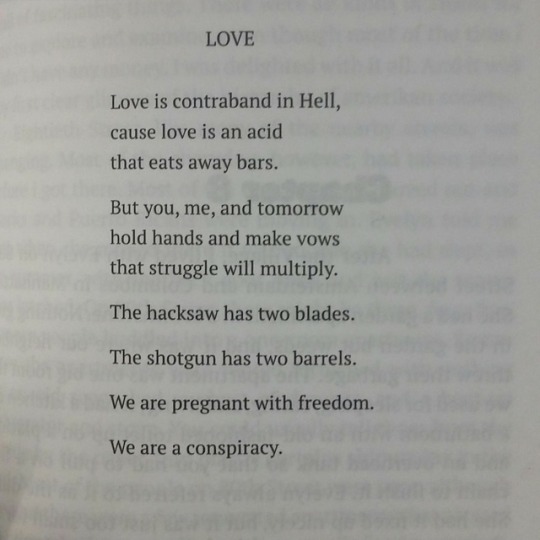
Love. Freedom. Conspiracy. Power. Purpose. Resistance.
#assata shakur#black liberation#black liberation army#black panther party#love#radical love#what is love#freedom#assata taught me#hands off assata#poetry#love poetry#soul sunday#soulfree sunday
3 notes
·
View notes
Text

Assata Shakur 4th of July Message
Nineteen Seventy Six, the year of this countries bicentennial and the flags fly high and the politicians roar and the bugles blow and Ray Charles sings praise of Amerika. And while MGM projects red, white and blue rainbows in the sky and Ideal is making Betsy Ross dolls and Seventh Avenue is belting out red, white and blue evening gowns every capitalist from here too California is getting into the act.
They are peddling Buy-centenial cups and coins and bells and belt buckles, churning out red, white and blue lampshades and ice cream and napkins and nooses. It's all one big happy carnival, a red, white and blue circus.
But do we buy the buy-centenial? What does it mean to Black people, to Chicanos to Puerto Ricans? What does it mean to poor people, to working people, to oppressed people?
What does it mean to Cherokee and Crow and Apache and Navajo and Sioux? What does it mean to the victims of Amerika? What do we have to celebrate? Should we celebrate George Washington who sold a slave for a keg of whiskey? Shall we celebrate the signers of the Declaration of Independence who referred to Native Americans are "Merciless Indian Savages" while murdering them and ripping off their land?
Shall we celebrate Wounded Knee, Watergate and Birmingham? Shall we celebrate Orangeburg, Attica, Kent State, Dred Scott, McCarthyism, Ludlow and Hayes? Shall we celebrate the lynchings, the concentration camps, and the wars and the greed? Shall we celebrate the bought elections, the FBI, the CIA, big brother, the big stick, burning crosses and the dollar diplomat?
There is no liberty, no justice, no freedom in Amerika. In 1776, Black people were slaves. In 1976, we are still slaves, enslaved by a racist system where the haves control everything and the have nots have to beg just to work. In 1776, this country was founded by the landed aristocracy who sought mainly to protect their interests. And in 1976 this country is still in the hands of a rich few who thrive off the misery of the many. No, we must not buy their bicentennial. Only a fool celebrates his own oppression.
There is a saying, "When your child cries and is hungry and you have no food to feed him, sing him to sleep". And so when inflation is raging, when taxes are soaring, when schools are closing, when corruption and unemployment are rampant and when over 70% of the people in this country are dissatisfied with the government, the rulers of this country creates a bicentennial lullaby. They have the wealth but rather than share it they try to pacify us with patriotism and pagentry. 'let them eat apple pie" they snicker. "Let them wear the color of the blood we make them shed" of the racism we manipulate them with and the misery and grief we make them suffer".
We have nothing to celebrate. Let the Rockefellers and the DuPonts and the Fords and the Mellon's celebrate. It is their bicentennial. Let them drape themselves with a red, white and blue shroud and wail the last desperate bellows of a dying bull. But let us hear a different drummer.
Let us issue a new declaration, a people's declaration. Let us work towards a second revolution, a revolution of the have nots, of the oppressed and the powerless. And let us work, let us organize, let us struggle so that a hundred years from now, our children will have something real to celebrate.
In solidarity and struggle,
Assata Shakur
Middlesex County Jail
June 29th, 1976
Join our Patreon Community and assist us in putting the finishing touches on our documentary Organizing Is the New Cool https://www.patreon.com/OITNC/
13 notes
·
View notes
Text
Hands Off Assata!
You spend your days walking the beach staring out into the open clear crystal blue waters, watching waves weave and captivate the curves of the coastline...
Looking for the peace you deserve.
For you have fought the fight and paid the price many times over. Still paying because only blood will be enough.
They are fond of blood, our blood. But you know that. You've lived through seeing our blood spilled across streets, in front yards, at churches like toddlers artwork and bodies on the floor like 3D designs; displays of power. It was your blood, once. They wanted your body. They still do.
You have been stripped of freedoms and ripped from family, from home, from country. And still they search for you to make you pay.
… for inspiring. For igniting. For setting fires under those who sat too still when the world kept its foot on their necks; while the world kept them in their places. The same world that tried to keep you in yours. Buried you deep and hoped to discard you. You ran.
You're older now, so running doesn't come as easy these days. Still they chase you. It's safe… to walk on beaches staring into crystal blue waters, watching waves weave and captivate the curves of the coastline...
But you ran home… to finish what you started.
#day 6#novemberwritingchallenge#write a fictional story about a historical figure#hands off assata#assata shakur#prose
6 notes
·
View notes
Photo

Mom ❤️😌 Queen Mother Assata Shakur
3 notes
·
View notes
Photo
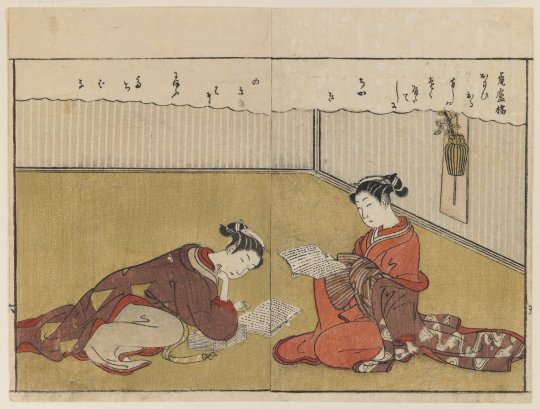
Closing out National Poetry Month, our Spring Interns paired some of their favorite poems with works from our collection. We hope you enjoy!
— Jeffrey Alexander Lopez, Curatorial Intern, American Art & Arts of the Americas
Image: Suzuki Harunobu (Japanese, 1724-1770). Page From Haru no Nishiki, 1771. Color woodblock print on paper. Brooklyn Museum, Gift of Peter P. Pessutti, 83.190.1
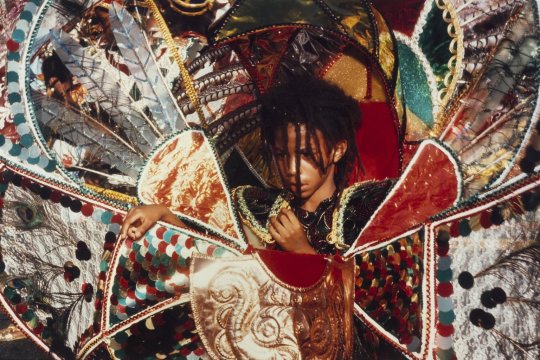
from Citizen: “Some years there exists a wanting to escape...” [Excerpt]
By Claudia Rankine
/
I they he she we you turn
only to discover
the encounter
to be alien to this place.
Wait.
The patience is in the living. Time opens out to you.
The opening, between you and you, occupied,
zoned for an encounter,
given the histories of you and you—
And always, who is this you?
The start of you, each day,
a presence already—
Hey you—
/
— Halle Smith, Digital Collections Intern
Catherine Green (American, born 1952). [Untitled] (West Indian Day Parade), 1991. Chromogenic photograph, sheet. Brooklyn Museum, Gift of the artist, 1991.58.2. © artist or artist's estate
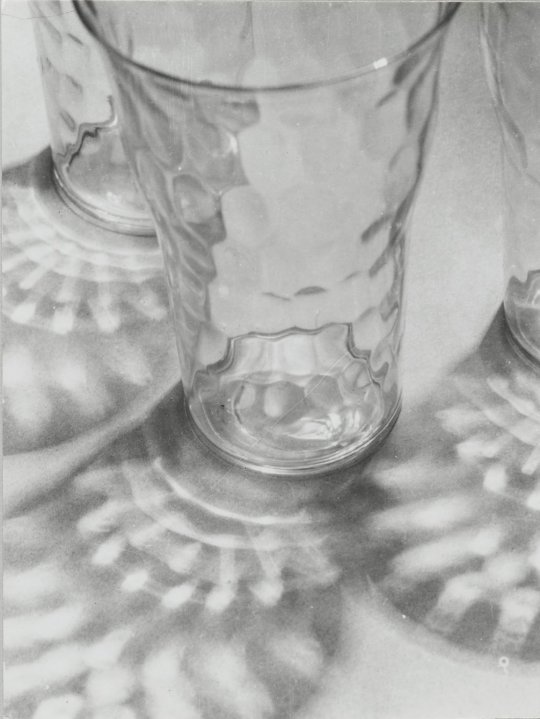
Ode to Enchanted Light
by Pablo Neruda
Under the trees light
has dropped from the top of the sky,
light
like a green
latticework of branches,
shining
on every leaf,
drifting down like clean
white sand.
A cicada sends
its sawing song
high into the empty air.
The world is
a glass overflowing
with water.
Consuelo Kanaga’s black and white photograph captures a dazzling, yet fleeting moment from everyday life. Three textured glasses cast shadows whose patterns are almost kaleidoscopic in effect. We can imagine Kanaga passing by her kitchen table, as she is brought to a halt to take a closer look at, and ultimately to photograph, the simple beauty generated by the play of light and everyday objects. The close-up scale of this image emulates the singularizing framing techniques deployed by Surrealist photographers, who also took parts of everyday life and blew them up in the photographic frame, thereby encouraging their viewers to look at life around us from a different angle. It is a way of saying: Here, take a closer look. Viewing the world with wonder, along with the joy that this act brings, are encapsulated in Pablo Neruda’s poem Ode to Enchanted Light. The speaker observes the way light passes through trees and creates enchanting patterns. He not only observes, but feels the beauty in the simple details of life, from the way light falls from the sky, to the sheen of leaves, to the buzzing of cicadas. Approaching life through such a hopeful lens evokes a glass-half-full perspective. In fact, the speaker is so hopeful that he believes “The world is/a glass overflowing/with water.” I think Kanaga would have felt the same way.
— Kirk Testa, Curatorial Intern, Photography
Consuelo Kanaga (American, 1894-1978). [Untitled] (Glasses and Reflections). Gelatin silver photograph. Brooklyn Museum, Gift of Wallace B. Putnam from the Estate of Consuelo Kanaga, 82.65.25

Easter Wings
By George Herbert
Lord, who createdst man in wealth and store,
Though foolishly he lost the same,
Decaying more and more,
Till he became
Most poore:
With thee
O let me rise
As larks, harmoniously,
And sing this day thy victories:
Then shall the fall further the flight in me.
My tender age in sorrow did beginne
And still with sicknesses and shame.
Thou didst so punish sinne,
That I became
Most thinne.
With thee
Let me combine,
And feel thy victorie:
For, if I imp my wing on thine,
Affliction shall advance the flight in me.
Easter Wings by George Herbet and Martin Bach’s flower vase from the Brooklyn Museum’s Decorative Arts collection reveal the interrelationship between form and function. In Easter Wings, Herbert strategically varies the line length to create an image that enhances the meaning of the poem; when you turn the poem on its side, it resembles the wings of a bird, of which are symbolic of the atonement of Jesus Christ. In doing so, the author is not only telling us his message, but he is showing it visually as well. Similarly, the vase takes the visual form of its function. Its floral design amplifies the meaning of the object, as the vase is meant to hold flowers. In both instances, we see how aesthetic properties of a work echo the meaning and function of the work itself.
— Amy Zavecz
Martin Bach (American, 1862-1921). Vase, ca. 1905. Opalescent glass. Brooklyn Museum, Gift of Mrs. Alfred Zoebisch, 59.143.16. Creative Commons-BY
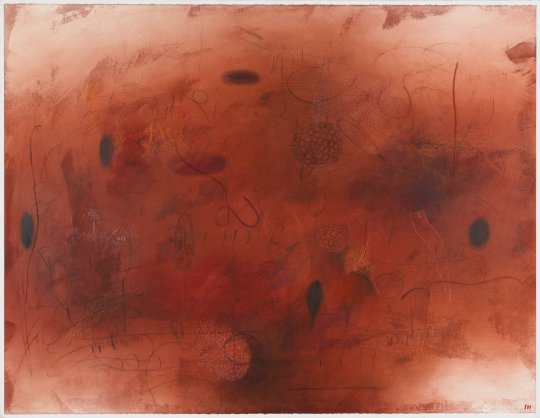
I am the Earth (Watashi wa chikyu) [Excerpt]
by Kiyoko Nagase, Translated by Takako Lento
I am warm, moist soil
I am a single supple stalk
I draw my life
all the way up into corollas of wild berries on the roadside
I am amazed at
a breast of water welling
to flow into the inlet of a muddy rice paddy
I am amazed at
myself being
hot steam blowing fire and sulfur up
from the bottom of the great ocean, deep indigo.
I am amazed at
the crimson blood flow
covering the earth’s surface in human shape;
I am amazed that it swells as the tides ebb and flow, and gushes out monthly under distant invisible gravity
…
I am the earth.
I live there, and I am the very same earth.
In the four billionth year
I have come to know
the eternal cold moon, my other self, my hetero being,
then, for the first time, I am amazed that I am warm mud.
The vivid imagery conjured up by Kiyoko Nagase’s poem is beautifully visualized by Emmi Whitehorse’s painting. The emphasis on deep Earth tones and abstract corporeality in both the poem and the painting really creates an intense metaphysical link between the environment and the self.
— Amanda Raquel Dorval, Archives Intern
Emmi Whitehorse (Navajo, born 1957). Fire Weed, 1998. Chalk, graphite, pastel and oil on paper mounted on canvas. Brooklyn Museum, Gift of Hinrich Peiper and Dorothee Peiper-Riegraf in honor of Emmi Whitehorse, 2006.49. © artist or artist's estate
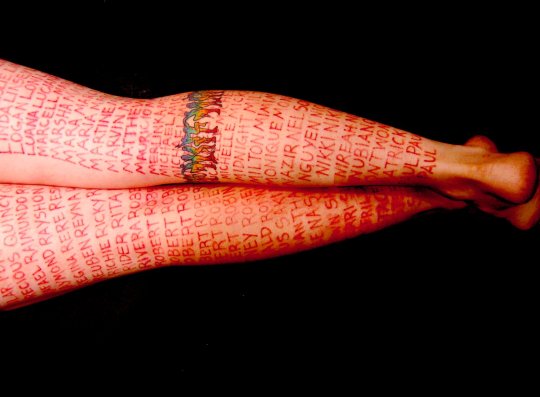
Seventh Circle of Earth
by Ocean Vuong
On April 27, 2011, a gay couple, Michael Humphrey and Clayton Capshaw, was murdered by immolation in their home in Dallas, Texas.
Dallas Voice
1
2
3
4
5
6
7
________________________________________________________
As if my finger, / tracing your collarbone / behind closed doors, / was enough / to erase myself. To forget / we built this house knowing / it won’t last. How / does anyone stop / regret / without cutting / off his hands? / Another torch
streams through / the kitchen window, / another errant dove. / It’s funny. I always knew / I’d be warmest beside / my man. / But don’t laugh. Understand me / when I say I burn best / when crowned / with your scent: that earth-sweat / & Old Spice I seek out each night / the days
refuse me. / Our faces blackening / in the photographs along the wall. / Don’t laugh. Just tell me the story / again, / of the sparrows who flew from falling Rome, / their blazed wings. / How ruin nested inside each thimbled throat / & made it sing
until the notes threaded to this / smoke rising / from your nostrils. Speak— / until your voice is nothing / but the crackle / of charred
bones. But don’t laugh / when these walls collapse / & only sparks / not sparrows / fly out. / When they come / to sift through these cinders—& pluck my tongue, / this fisted rose, / charcoaled & choked / from your gone
mouth. / Each black petal / blasted / with what’s left / of our laughter. / Laughter ashed / to air / to honey to baby / darling, / look. Look how happy we are / to be no one / & still
American.
Ocean Vuong’s “Seventh Circle of Earth” has persisted as one of the great, affective moments of poetry in my life since I first heard Pádraig Ó Toama’s gorgeous reading and discussion of it on his podcast, Poetry Unbound. I decided to pair Vuong’s poem with Mary Coble’s Untitled 2 (from Note To Self) because both works are urgently immersive into the violence and experience of LGBTQ people in the U.S., and for how each work uses text and physicality to address presence, pain, and erasure. Vuong’s poem is actually footnoted to a quote from a news article about a gay couple murdered in Texas. The page is thus blank, absent of text. The reader has to sink below the main stage, the accepted space of word and story, to find the voices of this couple and the depth of their story’s tenderness, eroticism, and utter devastation. Coble’s piece foils the structure and effect of Seventh Circle of Earth by taking what was subverted by Vuong—text and the narrative of violence—wholly to the surface. Her photograph captures her own legs tattooed without ink with the names of LGBTQ individuals victimized by hate crimes. I cannot help but think of Franz Kafka’s short story “In the Penal Colony,” in which prisoners’ “sentences'' are inscribed by the needle of a “punishment apparatus” directly onto their bodies. I was struck by how the curator’s note for this photograph describes Coble’s artistic endeavor here as “harrowing.” The needle in Kafka’s short story is indeed called “The Harrow”. The noun harrow is an agricultural tool that combs plowed soil to break up clumps of earth and uproot weeds and clear imperfections. The verb to harrow means to plague, and in the story’s original German the verb for “harrow”, eggen, is also translated as “to torment”. Kafka and Coble conflate these definitions of “the harrow” in their respective works: they use a needled device, like the true noun definition, as an instrument of torment because of someone else’s idea of punishment and justice. Here, violence is brought to the surface, intimate in as much as we are brought right up to the artist’s skin and into the presence of her and her community’s pain. Together, one can see how each creator physicalizes their respective artistic space to tell the stories of LGBTQ people, of what is tender and harrowing, below the surface and written into the skin.
— Talia Abrahams, Provenance Intern, IHCPP
Mary Coble (American, born 1978). Untitled 2 (from Note to Self), 2005. Inkjet print. Brooklyn Museum, Gift of the artist, 2008.10. © artist or artist's estate
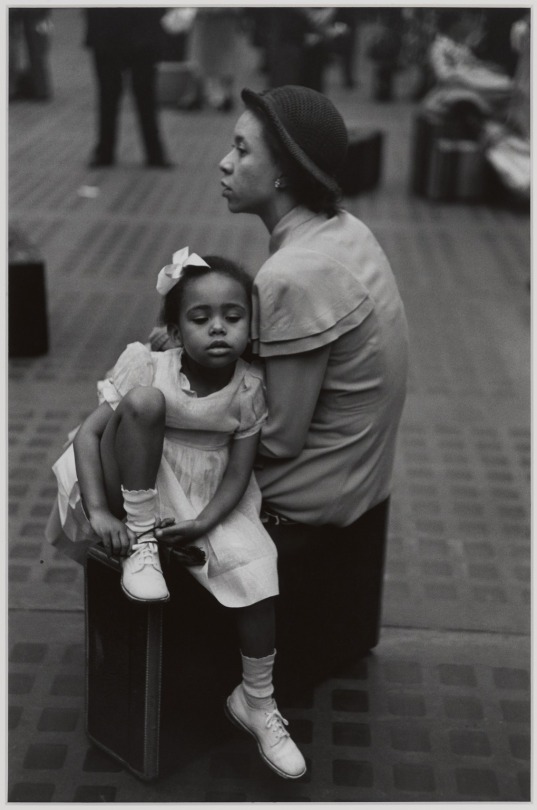
To my daughter Kakuya
by Assata Shakur
I have shabby dreams for you
of some vague freedom
I have never known.
Baby
I don't want you hungry or thirsty
or out in the cold.
and I don't want the frost
to kill your fruit
before it ripens.
I can see a sunny place
Life exploding green.
I can see your bright, bronze skin at ease with all the flowers
and the centipedes.
I can hear laughter,
not grown from ridicule
And words not prompted
by ego or greed or jealousy.
I see a world where hatred
has been replaced by love.
and ME replaced by WE
And I can see a world replaced
where you,
building and exploring,
strong and fulfilled,
will understand.
And go beyond
my little shabby dreams.
This poem is featured in Assata Shakur’s memoir, Assata: An Autobiography. It details her hope for a better world that her daughter can grow up in. This poem is positioned in the book when Shakur is facing increasing prosecution as a result of her activism and affiliations with the Black Panther Party and Black Liberation army. Being written more than 30 years after this picture was taken, the poem summons me to think about the trauma that many Black women face and how much of that trauma gets passed down to their children. The black and white photo of a mother and daughter provides a nice visual to the poem. “The image of a Black mother and child sitting on their luggage reflects the little-discussed history of segregated transportation in the northern United States. Through the 1940s, Penn Station officials assigned Black travelers seats in Jim Crow cars on southbound trains” (Brooklyn Museum). The photograph of train passengers waiting outside of Manhattan’s Pennsylvania Station especially echoes the verse “I don’t want you hungry or thirsty or out in the cold.” The overall optimistic tone of Shakur’s poem alters our relationship to the image as we imagine the mother pictured above hoping for the exact same things
— Zaria W, Teen Programs intern
Ruth Orkin (American, 1921-1985). Mother and Daughter at Penn Station, NYC, 1948. Gelatin silver photograph, sheet: 13 15/16 × 11 in. (35.4 × 27.9 cm). Brooklyn Museum, Gift of Mary Engel, 2011.22.3. © artist or artist's estate
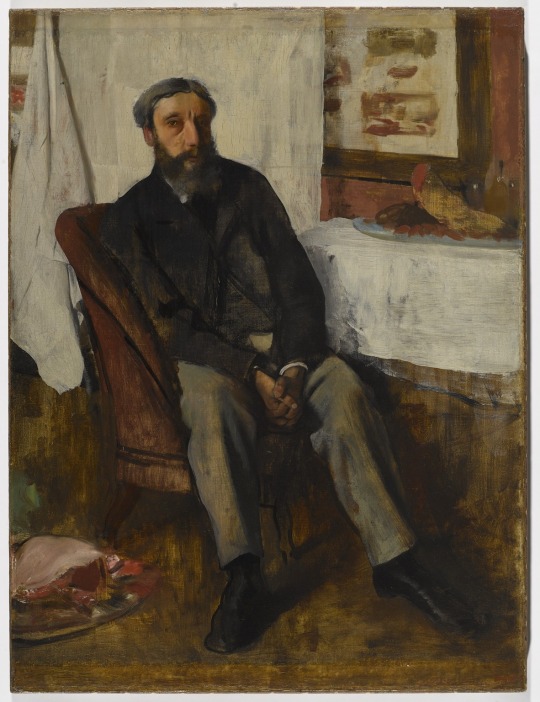
Crunch.
By Kailyn Gibson
I retch as a mass of sinew lies between my lips.
The sensation is unbearable.
Fortunately, the jar of flies has gone missing again.
Slowly, surely, and yet never sure at all,
the quiet of buzzing rings through the in-between.
It is a symphony wrought from blood and bone.
Saliva drips from bleeding, hungry gums,
And the crunch of glass echoes the grinding of molars.
If I proffered a sanguine smile, would masticated shards look like teeth?
Would they gleam just as prettily?
The flies ring,
and the rot calls.
— Kailyn Gibson
Edgar Degas (French, 1834-1917). Portrait of a Man (Portrait d'homme), ca. 1866. Oil on canvas. Brooklyn Museum, Museum Collection Fund, 21.112

Excerpt from Autobiography of Red
A novel in verse by Anne Carson
7. If Helen’s reasons arose out of some remark Stesichoros made either it was a strong remark about Helen’s sexual misconduct (not to say its unsavory aftermath the Fall of Troy) or it was not.
8. If it was a strong remark about Helen’s sexual misconduct (not to say its unsavory aftermath the Fall of Troy) either this remark was a lie or it was not.
9. If it was not a lie either we are now in reverse and by continuing to reason in this way we are likely to arrive back at the beginning of the question of the blinding of Stesichoros or we are not.
10. If we are now in reverse and by continuing to reason in this way are likely to arrive back at the beginning of the question of the blinding of Stesichoros either we will go along without incident or we will meet Stesichoros on our way back.
11. If we meet Stesichoros on our way back either we will keep quiet or we will look him in the eye and ask him what he thinks of Helen.
12. If we look Stesichoros in the eye and ask him what he thinks of Helen either he will tell the truth or he will lie.
13. If Stesichoros lies either we will know at once that he is lying or we will be fooled because now that we are in reverse the whole landscape looks inside out.
This excerpt comes from Appendix C of Anne Carson’s Autobiography of Red, a novel in verse. A translator and classicist herself, Carson mixes fact with fiction in her unconventional retelling of the myth of Geryon and Hercules, beginning with a roundabout introduction to the poet Stesichoros. Autobiography presents a captivating example of recent Queer projects that take up Classical material as their basis. A fascination with the Classical past has pervaded our modern conception of sexual identity politics, down to the very etymology of the word “lesbian.” In this fascination, I see the same desire to capture Classical imagery as cultural heritage which has also pervaded American museums, albeit with significantly different aims. The fresco pictured above comes to mind, which passed through many collectors and was even purchased by the museum before anyone pegged it as a modern piece—not an original Roman fresco. John D. Cooney, a 20th century curator of our Egyptian, Classical, and Ancient Near Eastern Art collection, wrote that “the unclad and somewhat winsome charms of the lady [probably] diverted objective glances.” Both in the case of the fresco and Carson’s novel, the “unclad and somewhat winsome charms” of the Classical past shape and reshape our understanding of history.
— Kira Houston, Curatorial Intern, Egyptian, Classical, and Ancient Near Eastern Art
Modern, in the style of the Roman Period. Part of a Fresco, early 19th century C.E. Clay, paint. Brooklyn Museum, Ella C. Woodward Memorial Fund, 11.30.
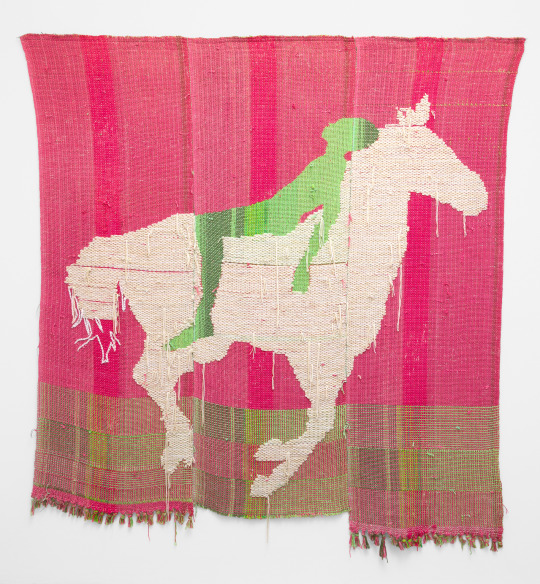
Late Fragment
by Raymond Carver From A New Path to the Waterfall,
Atlantic Monthly Press, 1989.
And did you get what
you wanted from this life, even so?
I did.
And what did you want?
To call myself beloved, to feel myself
beloved on the earth.
— Shori
Diedrick Brackens (American, born 1989). when no softness came, 2019. Cotton and acrylic yarn. Brooklyn Museum, Purchased with funds given by The LIFEWTR Fund at Frieze New York 2019, 2019.12. © artist or artist's estate
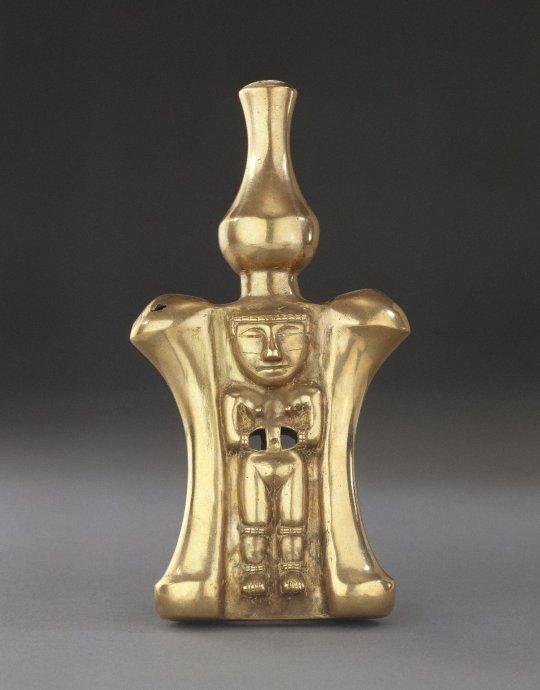
Jaguar
By Francisco X. Alarcón
some say dicen que ahora
I'm now almost estoy casi extinto
extinct in this park por este parque
but the people pero la gente
who say this que dice esto
don't know no sabe
that by smelling que al oler
the orchids las orquídeas
in the trees en los árboles
they're sensing están percibiendo
the fragrance la fragancia
of my chops de mis fauces
that by hearing que al oír
the rumblingc el retumbo
of the waterfalls de los saltos
they're listening están escuchando
to my ancestors' el gran rugido
great roar de mis ancestros
that by observing que al observar
the constellations las constelanciones
of the night sky del firmamento
they're gazing están mirando
at the star spots las motas de estrellas
on my fur marcadas en mi piel
that I am and que yo soy
always will be y siempre seré
the wild el indomable
untamed espíritu silvestre
living spirit vivo de esta
of this jungle jungla
While the author of the poem speaks about animals, their words can also speak on behalf of the erasure of indigenous peoples in South America. Much like the jaguar, indigenous traditions and culture are very important to life in South America. Despite their marginalization, Indigenous peoples throughout the Andes used coca leaves to help with the altitude. The use and cultivation of coca are criminalized throughout most of South America despite it being essential to indigenous cultures. This vessel was used to contain lime which would activate the coca leaves. Much like the jaguar, indigenous traditions are also faced with endangerment despite being woven into the fabric that is Latin America. Through the opposite man and woman figures, the vessel shows the duality that is important to the Quimbaya people which is still relevant to Colombians today.
Aunque el autor del poema habla sobre los animales, sus palabras también comunican el sentimiento común de la supresión de los indígenas en Suramérica. Con la mención del jaguar, se puede entender en el poema que la cultura y las tradiciones de las personas que son indígenas son sumamente importantes para la vida en Sudamérica. A pesar de su marginación, los indígenas en Los Andes utilizan la hoja de coca para ayudar en la altura de las montañas. El uso y el cultivo de la hoja de coca fue criminalizado (penalizado) a través de Sudamérica, aunque su uso para los indígenas era vital y esencial para su cultura. Este recipiente que se utiliza contiene limón lo que activa la hoja de la coca. Similarmente al jaguar, las tradiciones de los indígenas siempre estaban en peligro aunque estuvieran entrelazadas en las telas de lo que sería Latinoamérica. A través del hombre opuesto y las figuras de mujeres, el recipiente muestra la dualidad de lo que es importante para las personas que son Quimbaya, algo que todavía hoy es relevante para los Colombianos.
— Jeffrey Alexander Lopez, Curatorial Intern, American Art & Arts of the Americas
Quimbaya. Poporo (Lime Container), 1-600 C.E. Tumbaga. Brooklyn Museum, Alfred W. Jenkins Fund, 35.507. Creative Commons-BY
115 notes
·
View notes
Photo

Celebrate Assata Shakur's Liberation Day!
6 notes
·
View notes